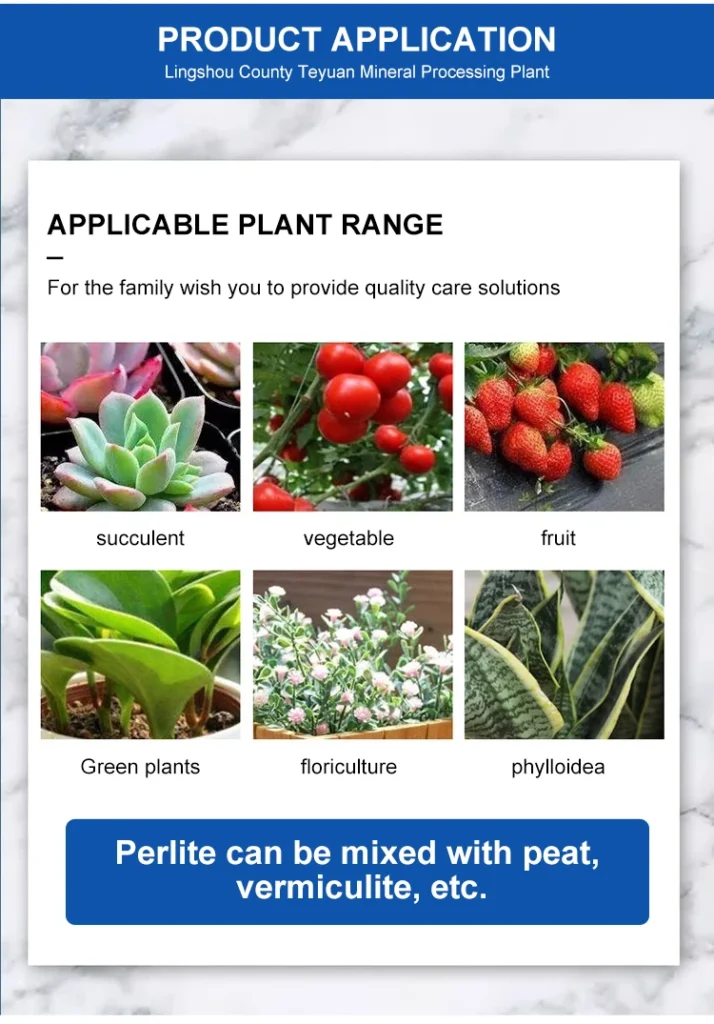Potting soil is the foundation of container gardening, and knowing when to incorporate perlite, with its characteristic density of around 1.2%, can make a world of difference for your plants.
Starting a New Container Garden
When beginning a new potting project, adding perlite is a smart move. For plants like succulents and cacti that demand excellent drainage, mixing in perlite right from the start ensures the soil won’t become compacted. Its airy structure, formed by the expansion of volcanic glass, creates channels for water to flow through. This initial addition gives roots room to grow and breathe, setting the stage for healthy plant development.

Repotting Established Plants
Even if you’ve had a plant in a pot for a while, repotting is an opportune time to introduce perlite. Over time, soil can degrade and lose its porosity. By gently loosening the root ball and blending in perlite, you rejuvenate the growing medium. For example, a fern that has been in the same pot for a season or two might show signs of slow growth due to poor drainage. Adding perlite during repotting can remedy this, allowing the fern to bounce back.
Preparing for the Growing Season
As spring approaches and you gear up for a new growing season, it’s beneficial to amend your potting soil with perlite. The changing weather brings varying levels of rainfall. Perlite helps manage water levels in the soil. In wetter months, it prevents waterlogging, while in drier spells, it retains just enough moisture to keep plants hydrated. This adaptability is crucial for a wide range of plants, from annual flowers to herbs.
Growing Plants Prone to Root Rot
Some plants, such as begonias and African violets, are highly susceptible to root rot. Incorporating perlite into their potting mix is a preventative measure. The fast-draining nature of perlite means excess water doesn’t linger around the roots. Given its 1.2% density, it provides a light and airy environment that these delicate roots can thrive in, reducing the risk of fungal diseases that come with overly wet conditions.
When Using Heavy Potting Soils
If you’re working with a heavy, clay-based potting soil, perlite is a must-add. Clay soils tend to compact easily, restricting root growth and water movement. By adding perlite, you break up the heaviness. A mix of, say, 30% perlite and 70% heavy soil can transform it into a more plant-friendly medium. The perlite’s pores allow air and water to penetrate, making it suitable for plants like tomatoes that need a well-balanced soil structure.
For Seed Starting
Starting seeds indoors? Perlite is invaluable. It provides a sterile and well-aerated environment for germinating seeds. Its light weight also makes it easy for delicate seedling roots to push through. You can create a seed-starting mix with a high percentage of perlite, ensuring the tiny roots get the oxygen they need. As the seedlings grow, they’ll establish strong root systems, ready to be transplanted outdoors or into larger pots.
During Extreme Weather Conditions
In regions with harsh summers or cold winters, perlite can offer protection. In hot weather, it helps cool the soil by allowing better air circulation. In winter, it provides some insulation. For plants left outdoors in pots, a layer of perlite at the bottom of the container can buffer against freezing temperatures, safeguarding the roots and increasing the plants’ chances of survival.

